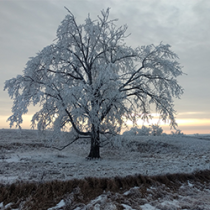Data Notification
Protocol Change for Reaeration Field and Lab Collection (DP1.20190.001)
July 22, 2022
The original sampling design for NEON gas exchange measurements included simultaneous volatile gas tracer and conservative salt tracer constant-rate injections at most NEON stream sites (BLUE and ARIK have hydrologic conditions that are not suitable for volatile gas injections, see below). After several years of data collection, NEON staff have begun evaluating relationships between gas exchange metrics and stream flow. This relationship is critical so that data users can predict gas exchange at the sites based on stream flow conditions.
In conjunction with the Reaeration Technical Working Group (REA-TWG), which is comprised of external researchers with expertise in the field, we evaluated relationships between gas exchange metrics and stream flow. We determined that many sites (12 of 22) had sufficient data points and relationships to support replacing continuous gas and salt additions with salt slug-only additions. These salt slug-only additions will be used to further refine stream depth relationships and ensure no major hydrologic or geomorphic changes have occurred at each site. Sites without sufficient data to determine relationships with stream flow will continue conducting continuous gas and salt injections and will be re-evaluated in ~ 2 years.
Sites moving to salt slug injections:
- Domain 02 – LEWI & POSE
- Domain 04 – GUIL
- Domain 07 – LECO & WALK
- Domain 11 – PRIN
- Domain 13 – WLOU & COMO
- Domain 15 – REDB
- Domain 17 – BIGC
- Domain 18/19 – OKSR & CARI
Sites continuing to perform quarterly salt slug injections:
- Domain 10 – ARIK (extremely slow flows result in long travel times)
- Domain 11 – BLUE (large/wide channel prevents gas from diffusing evenly)
Sites continuing to perform volatile gas injections alongside salt injections
- Domain 01 – HOPB
- Domain 04 – CUPE
- Domain 06 – KING & MCDI
- Domain 08 – MAYF
- Domain 14 – SYCA
- Domain 16 – MART & MCRA
- Domain 17 – TECR
Please use the data portal contact form for further inquiries; select DP1.20190.001 in the Data Product dropdown list.
